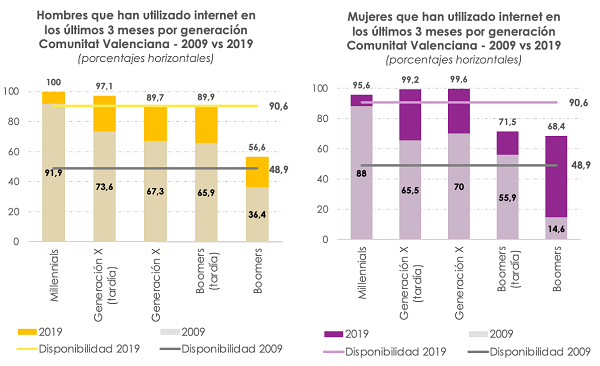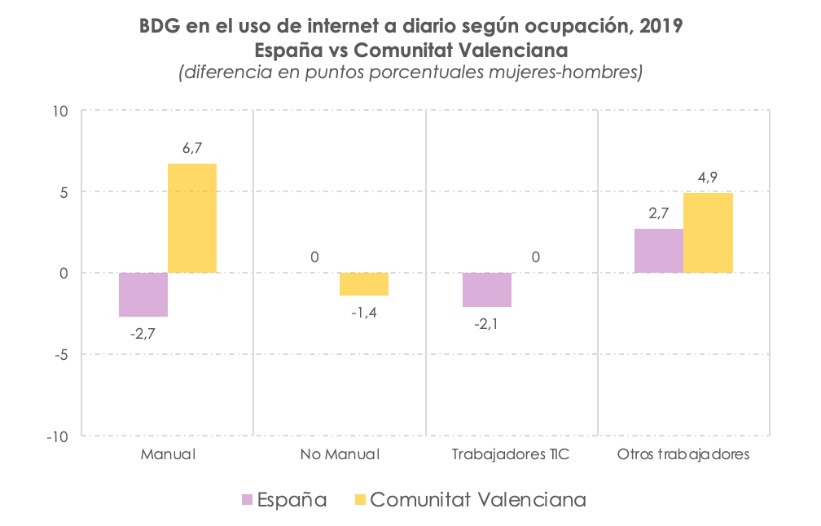On 7 May, 2021, the document “DIGITAL GAP AND GENDER IN THE VALENCIAN COMMUNITY 2020 Report” was presented by the Chair for Digital Gender Gap of Universitat de València as part of the II Conference about Digital Gender Equality. This report, which can be downloaded at RODERIC UV, shows very interesting indicators on the evolution and current situation of the digital gap in regards to gender in the Valencian Community.
The research on Digital Gender Gap focuses on the identification of inequalities between men and women in regards to three aspects related to information technologies: the gap in access to ICTs, the gap due to ICT use and training, and the gap in inclusion resulting from ICT use in today's society. This report focuses on the first two conditions of the gender digital gap and analyses its impact on the use of ICTs in society, e.g. the low presence of women in ICT companies.
To measure these inequalities, it is measured the distance between the levels that each population group presents in different selected indicators to explain the reality of men and women in the Information Society.


In conclusion, the main focus of concern relating gender digital gap is in the use of computers and, therefore, in the development of more specialised ICT skills and knowledge. The gap in mobile phones use and the access and sporadic use of the Internet happens mainly in especially vulnerable collectives: people with low levels of education, low levels of income and labour inactivity. However, it ca be observed that once they start using Internet, women incorporate this technology to their daily lives more easily than men, reversing the gap in the majority of groups, with the exception of the group of people with no education.
However, it is in the use of computers where women experience higher difficulties and lag behind men. Given that the use of computers represents a user with higher ICT skills and the use of more specialized programmes, arises the question as to what is happening in the areas where the use of these more advanced tools is mandatory: the ICT sectors.
As the Chair of Gender Digital Gap of Universitat de València points out, it is necessary to continue to deepen our knowledge of the contexts in which this gap is situated. From the labour, economic, social, geographical and family aspects. The current emergency situation has shown how necessary it is to prevent and reduce this gender digital gap in order to increase opportunities and build an equal society thanks to ICT and education in technologies appropriate to each context.








